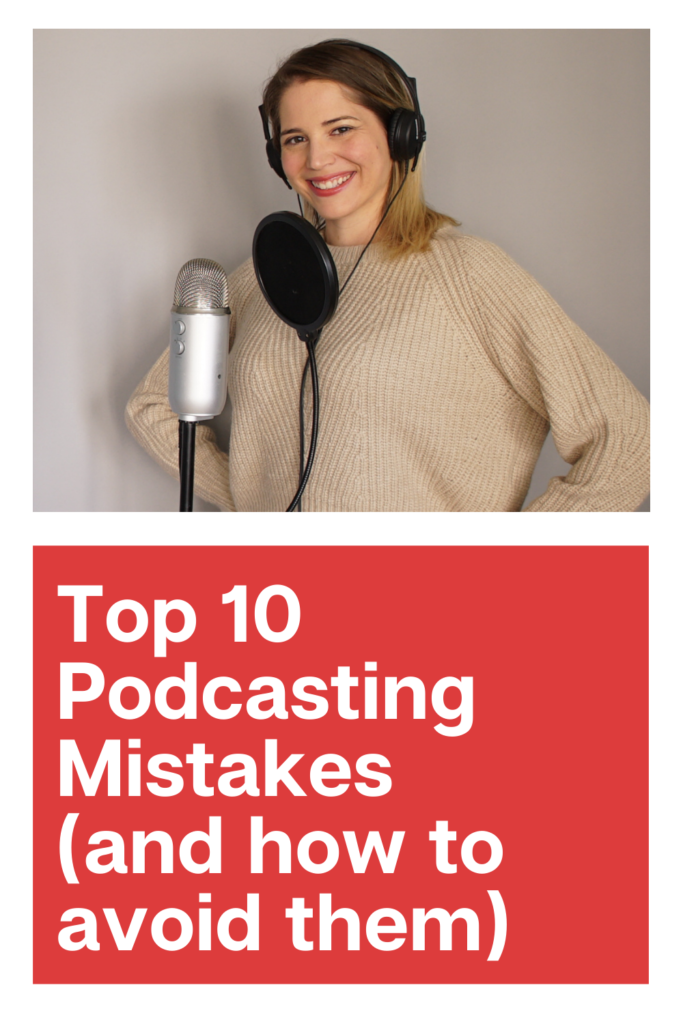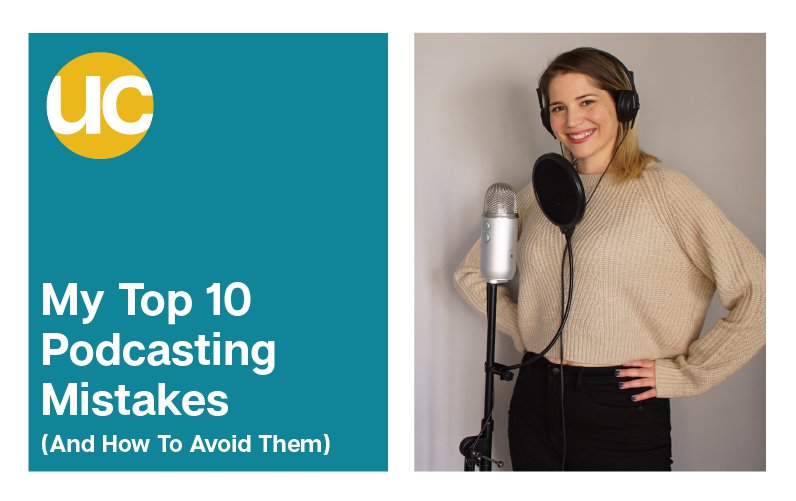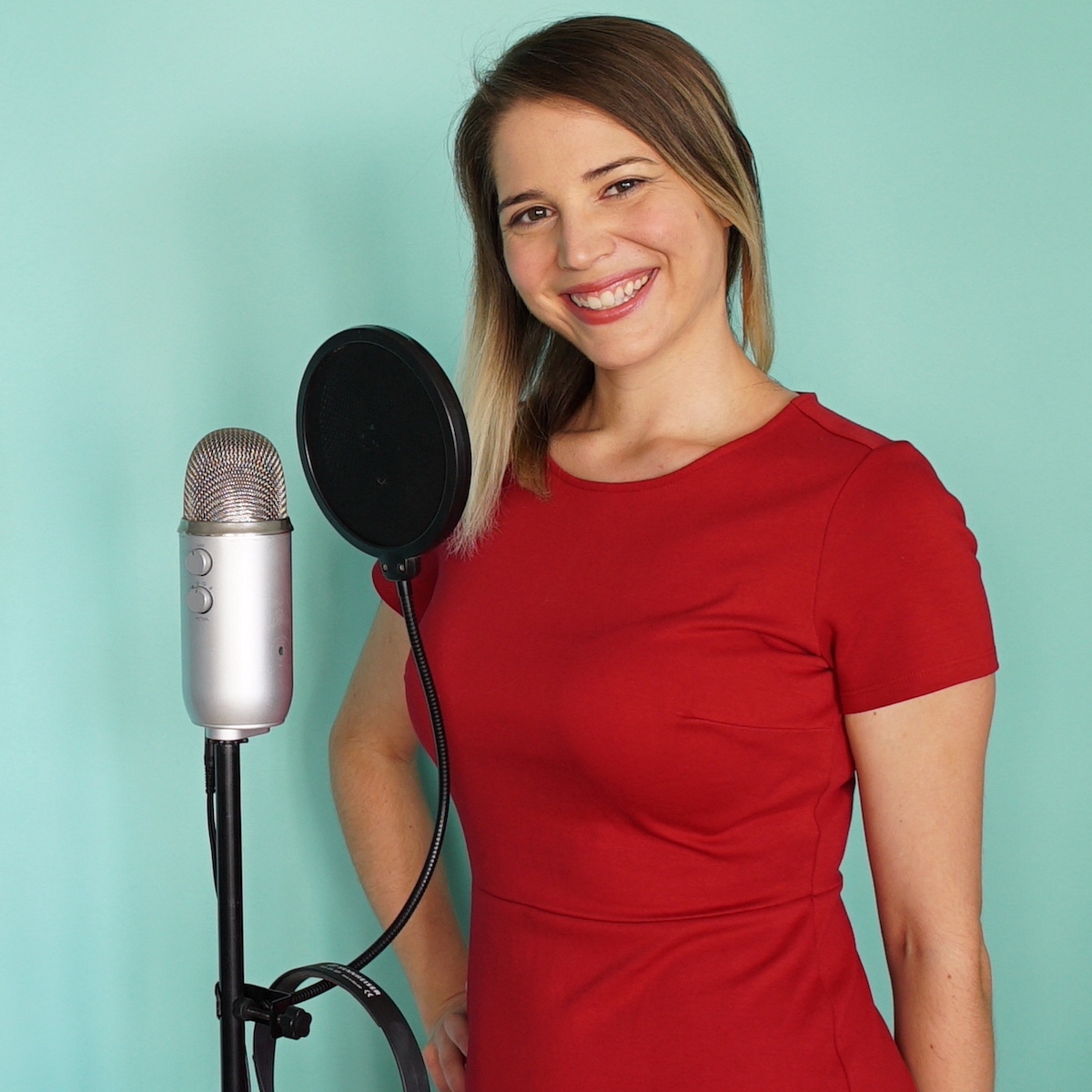Have you ever listened to a podcast and wondered why it doesn’t exactly sound… right? Everybody has a different setup which means the same rules will never apply, but there ARE some specific things everyone can do to create better podcasts. I’m going to take you through my top 10 podcasting mistakes and how to avoid them, so that you can create polished, magnificent content!
1. Randomly releasing episodes when you feel like it
Consistency is key with all content marketing. Heck, with all content generally! People will come to rely on your content showing up in their feeds on a particular day at a particular time. On Tuesdays, you can listen to Ultimate Podcast Marketing first thing in the morning, and get jazzed about the work week with podcasting strategies! On Fridays, you can listen to Ya Gotta Laugh! and forget about the work week! If your audience notices that you’re not really putting content out on a regular schedule, they’re not going to continue looking for it each week. They’re going to forget you even have a podcast, and you’ll wonder why no one downloads it when you release new episodes.
How to avoid it:
Batch record your episodes once a month! Make a day of it, and write out your topics and outlines. Then record 4-5 episodes in a row, and if you’re feeling super ambitious, you can edit them all in the same day (or just send them off to a podcast producer to take care of the rest!). This can be tricky to schedule for podcasts that rely on guests (like my other podcast, Ya Gotta Laugh!) so in some cases batch recording could look a little bit different (i.e. two episodes a week then a week off), but you can still batch edit and schedule.
2. Recording with the wrong mic
I realize this sounds pretty basic but it’s actually very common. Computers like to “help” us by guessing which mic we want to use when we set up our gear to record. But what these poor lil computers don’t know, is that we would prefer to record with the fancy expensive mics with the cardioid pickup patterns, not the built-in computer mic.
How to avoid it:
Double check your settings before you start recording, each time you open up a new project in any software. Do a test recording and listen back to make sure it sounds correct. Snap your fingers in front of the microphone and your computer mic to see which one has a higher input level. If you unplug your mic for any reason, do this again before you hit record.
3. Recording virtual interviews over Zoom
There is absolutely no reason to buy a nice mic if you’re going to record your interviews on Zoom. You may as well burn a pile of cash if you want to use Zoom as your main recording software. Zoom (and frankly, any other app that records over the internet) uses technology that compresses your audio which causes random dips in the volume levels. It also tries to prevent echos (which is great, don’t get me wrong) but the output of the recording sounds like you’re under water.
Also, pro tip, if you insist on using Zoom (honestly I just don’t get it) you can set up the recording to create separate tracks for you and your guest so at the very least you can edit them individually.
How to avoid it:
Just… just don’t use Zoom. First of all, record your own audio to your computer using an app that doesn’t rely on the internet (i.e. GarageBand, Audacity) and record a separate track for your guest using an app like Zencastr that will give you a separate file. YES I KNOWWWWW Zoom gives you separate files, I even told you it does in the last paragraph! BUT, Zencastr will do a better job of not destroying your guest’s audio.
If you REALLY want a great quality sounding podcast and your guest has the capability, have them record with their own fancy microphones to their own computers, then send you the audio when you’re done. SO MUCH BETTER.
4. Not balancing out the volume levels on multiple tracks
This can be tricky. Everyone speaks at different volumes and it can make editing difficult. The problem is, if you don’t address this in post-production, your audience will have to turn the volume up and down randomly to hear everything. They’re going to get annoyed, and they’re going to listen to someone else’s podcast instead.
How to avoid it:
First, record separate tracks so that you have the capability to boost or lower the volume individually. If you have one track with all the voices on it, you’re going to have to do something called volume automation, which is manually raising and lowering the volume at different points in your track to balance out the levels. This is not ideal. So do step 1 first! Finally, you’ll want to use an effect called compression which will bring louder and quieter volumes closer together, which means less variation in the final volume level.
5. Pretending to be someone you’re not
Quite possibly the worst podcasting mistake, pretending to be someone you’re not is basically shooting yourself in the foot. Look, people are very savvy and they know when someone is putting on an act. I used to believe that people only wanted to see the super polished, professional side of Emily, until I finally figured out that I was connecting with people WAY more easily by cracking jokes and laughing at my own silly blunders. People want to know that they’re listening to the REAL you. They’re far more likely to shell out (either by becoming clients or subscribing to your Patreon) if they feel like you’re being genuine with them.
How to avoid it:
Leave room in your podcast for your own personality. If you work with a script, try giving yourself more bullet points instead of walls of text to read. If you have an opinion, share it. Who the hell cares if someone doesn’t like it? Not everyone likes you, and the just never will, so why bother trying to get them on your side when so many zillions of other people like you? If it helps, I think you’re just 100 stars of magic and I love your cool individual style.
6. Not testing your setup before you record
Look, it takes an extra 3 minutes out of your process but it’s SO worth it. What’s worse, fighting with your recording software for a few minutes or realizing that you’ve recorded everything on your computer mic instead of your fancy expensive mic that you spent money on specifically for this content? Or realizing that you’ve recorded so quietly that you can’t hear anything at all? OR… recording with the sound of a loud electrical buzzing sound as a result of some crossed wires?
You absolutely must test your setup before you record. Every. Single. Time.
How to avoid it:
Record a small sample and listen back to make sure your voice is coming through clearly and you have a strong waveform. Make sure it’s not too loud, this can cause distortion what cannot be removed from a recording.
Double check that your mic is correctly set up – select the correct mic from the input list and make sure your mic is set to a pickup pattern that is facing your mouth (cardioid usually). The logo should be facing you. Sometimes computers try to set the input to the computer mic automatically so it’s always important to double check this!
Finally, listen back to make sure it sounds good.
7. Not recording virtual interviews in more than one place
I always get bewildered looks when I tell people I record in at least 3 places when I’m doing guest interviews remotely. But I have used those backup recordings before, and I will use them again, I guarantee you! If your recording fails in one place, you’ll still have your guest’s audio somewhere else and you won’t lose that content. It really truly sucks to lose an entire episode with a super amazing guest that took months to book.
How to avoid it:
You already know that I think Zoom is a garbage fire for recording audio, BUT, if you’re going to be doing a video call with your guest so that you can see them anyway, you should record the call as a backup JUUUUST IN CASE you need to use it. Then, record using Zencastr at the same time. THEN, record your own audio to your computer, and if possible, have your guest record their own audio to their computer and send it to you.
8. Forgetting to hit record altogether
You’re testing, you’re anxious about a guest or you’re feeling rushed for time – and then you click back to your recording software and realize you’ve totally forgotten to hit record. GREAT NEWS your computer is always listening and creeping on your conversations! I really hope that’s not true actually. This is a really crappy situation to find yourself in – and it’s especially why I recommend recording in several locations for virtual interviews.
How to avoid it:
Before you do your preamble and intro, run through a quick checklist. 1. Is my mic turned on and set to the correct input? 2. Do I have my notes and a glass of water? 3. Am I recording and getting a nice strong waveform? 4. I’m ready to record!
9. Recording in spaces with too much noise/Not enough soft surfaces
This is probably the least offensive of all the podcasting mistakes I’m covering here. Really, the only downside is that you’ll have random sounds here and there throughout an episode but it won’t be so annoying that people will have to turn it off. However, what separates a professional quality recording from an amateur recording lies in the prep we do for our spaces before we hit record.
How to avoid it:
Close your windows! Find a quiet room or space where you know people won’t barge in on you randomly. Make sure you have your mic close to your face, about 6” away so there isn’t a lot of room for the sound of your voice to bounce around – this will cause that echoey sound. Close your curtains, eliminate any hard reflective surfaces if possible, record in a room with a rug or a couch that takes up a lot of room. Also, if you have appliances that make a lot of noise (shout out to my fridge) feel free to unplug it or find other ways to remove that noise. Remember, there are some things you just cannot get rid of in post!
10. Not asking people to rate, review and subscribe
It’s not pushy or salesy, you’re giving them free content! Without those reviews it’ll be much harder for people to search for and find your podcast in different platforms, specifically Apple Podcasts. Plus, you want to build up testimonials and social proof that your podcast is awesome!
How to avoid it:
In your pre-recorded outro, include a call to action asking for a 5 star rating and a written review, and let your listeners know that when you leave a review it helps you gain more exposure. Also feel free to sprinkle this little tidbit in throughout your episodes! Finally, you can read your reviews on your podcast to encourage MORE reviews! People love hearing their words read out by their favourite podcasters, and love being acknowledged and thanked as your fans. It’s a great engagement tool!




